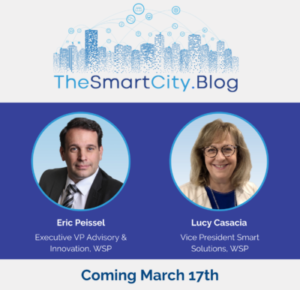Customer Data Analysis: Key lessons from Sandy Carter of AWS


- March 3, 2023
- Grant Furlane, Locomobi World
Jeff Bezos, the Founder and CEO of Amazon said, “If you make customers unhappy in the physical world, they might each tell six friends. If you make customers unhappy on the internet, they can each tell 6,000.”
It is safe to say that he knows about the 6,000 for a fact because of his company’s investment in customer data analytics and overall experience.
Any business, organization or even government that operates on the internet or relies on smart technology to run its operations or gain customers must have a data analytics strategy.
When a customer uses a website or an app their actions and behavior on the platform are collected and used to make decisions about what is best for the customer and how that information can be used by a company to make the customer happily return.
How that data is shared within the organization is the next key factor to improving customer experience. If one department hoards crucial information in data silos denying other key teams within the business access to that data, then all customer data analysis becomes useless. Customer data from the accounts department can give the sales and marketing team insight on what they need to push sales on and where they need to do more on marketing. Data from the sales and marketing team can help the creative department gain knowledge on the demographics they are creating ads and content for. Everyone should share data and information with one entity in mind; the customer.
Sandy Carter, the Vice President of Worldwide Public Sector Partners and Programs at Amazon Web Services, while discussing customer data analytics with Alan Cross and LocoMobi CEO Grant Furlane said that at her organization they work backwards, from the customer. She said they are “constantly with the customer” and are “customer obsessed” not “customer focused”. According to her, businesses should start with the customer and not the technology. Once a company understands their customer and their experience then they can use whatever they got from that data analysis to innovate.
Most companies do their customer data analysis through social media sites. However, this process cannot be sufficiently met this way. There has to be a reason and strategy behind it that will meet the needs of the business as well as the customers.
Some of the things to consider in general are:
- What is it that the company wants to understand about the customer?
- Where will that information go within the company, what will it be used for and by who?
- What is the result and follow up action for a positive outcome from the data analysis?
- What is the best way to move forward if the data analysis shows that the customer has had a negative experience with the company’s products or services and is completely unsatisfied?
- Was the data that was collected and analyzed the correct data or was it too much, too little, too biased or collected from the wrong demographic?
- What kind of data analysis needs to be done for the different social media sites?
Carter said that social media should be used by businesses as a listening tool. For instance, by doing surveys on Twitter or looking at pictures on Instagram one is able to get a sense of what others are saying and doing in the marketplace.
It is crucial for companies as well as governments to have data strategies before getting into smart technology and using artificial intelligence. This applies to everything from parking systems, traffic management, and distributing utilities and resources like water
She said that AWS’s approach to customer data analysis is consistent when talking about the cloud. Every business should know who they are targeting. For instance, AWS works with its partners to tell stories from the customers’ perspective and make data decisions based on that.
Carter gave an example of eWater Services who harness the digital cloud to increase access to water in African countries like Tanzania. They distribute water and do maintenance work on the infrastructure. eWater uses smart technology and local operational structures to install and maintain water systems in a sustainable way. They have worked with Tetra Tech International Services and Resonance together with USAID-funded Water Resources Integration Development Initiative (WARIDI) to use the the digital cloud to provide around 23,000 people with reliable and affordable water. Residents pay for the water through an eWater payment system that uses mobile money.
When asked how artificial intelligence can make cities better, Carter said data analytics and AI make cities smarter. She said the data that cities get through AI can be used to detect things like fraud and abuse. It can also be used to focus on demand and planning especially around traffic management and weather patterns.
Concerning roadblocks to cities adopting innovation into their systems, she said there is a problem with integrating data for instance between one city’s fire system, emergency response, and the police department. There is no clear way of exchanging or passing data among them because they each may have different systems of gathering data and don’t know how to pass that data around. Making it another example of having customer data, but not having a system that allows an organization to see things from the customer’s perspective.
Sometimes the system wants to do everything at the same time, but Carter advises that starting small is the best bet, “Roadblocks occur when you do everything at the same time.”
You can follow Carter on Twitter for more insights. Her handle is @sandy_carter.
Recent posts















